- TOP
- Sustainability
- Action on Climate Change

Action on Climate Change
--Disclosure Based on the TCFD Recommendations
Basic Approach
At the NLM Group, we fully recognize the impact that our business activities may have on the environment. We have established a basic environmental policy, under which we are taking initiatives to realize sustainable businesses and a sustainable society voluntarily and proactively, beyond complying with related laws and regulations. We have identified action on climate change as one of the NLM Group's material issues. We will strive to enhance the content of the information we disclose in accordance with the TCFD recommendations.
Governance
To build a structure for taking action on climate change, we have set up the Group Environmental Committee and the Group CSR Committee, which are chaired by the president. Guided by these committees, we formulate plans of action to promote sustainability, including action on climate change.
In addition, to enable the NLM Group to further solidify its growth strategy by planning and executing an optimal decarbonization strategy amid the global trend toward decarbonization, we have established the Green Growth Strategy Office, which integrates authorities and responsibilities. At present, we have set targets for achieving carbon neutrality by 2050 and are advancing initiatives to achieve them. We are taking an integrated approach to pursuing the Group's initiatives to achieve carbon neutrality, through steps such as securing green aluminum, customer demand for which has been increasing, and the establishment of a circular supply chain in which used aluminum is reused as a material, in addition to engaging in existing energy-saving and recycling activities.
Changes in CO2 Emissions (Scopes 1, 2 and 3),Indicators, and Targets
At the NLM Group, we have added Scope 3 emissions to Scopes 1 and 2 and are pushing forward with initiatives to ensure that greenhouse gas emissions (emissions per unit of sales) in 2030 will be 30% lower than the level in FY2013 (Scopes 1 + 2: 1.41 tons CO2/million yen, Scope 3: 7.58 tons CO2/million yen),with the goal of achieving carbon neutrality by 2050.
In FY2023, CO2 emissions per unit of sales decreased from the previous fiscal year for both Scopes 1 + 2 and Scope 3.
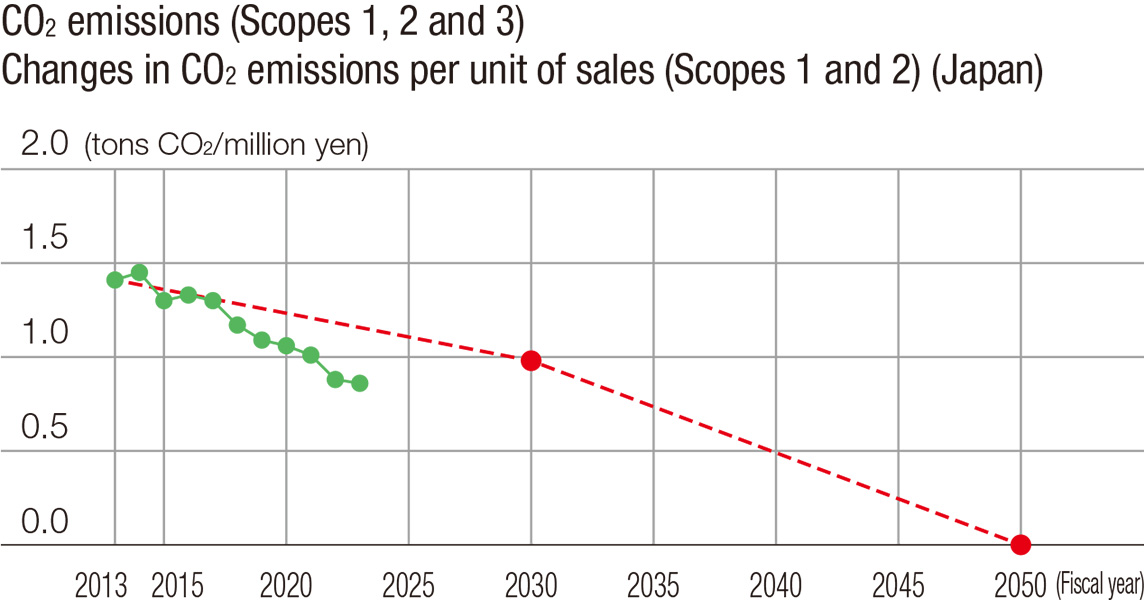
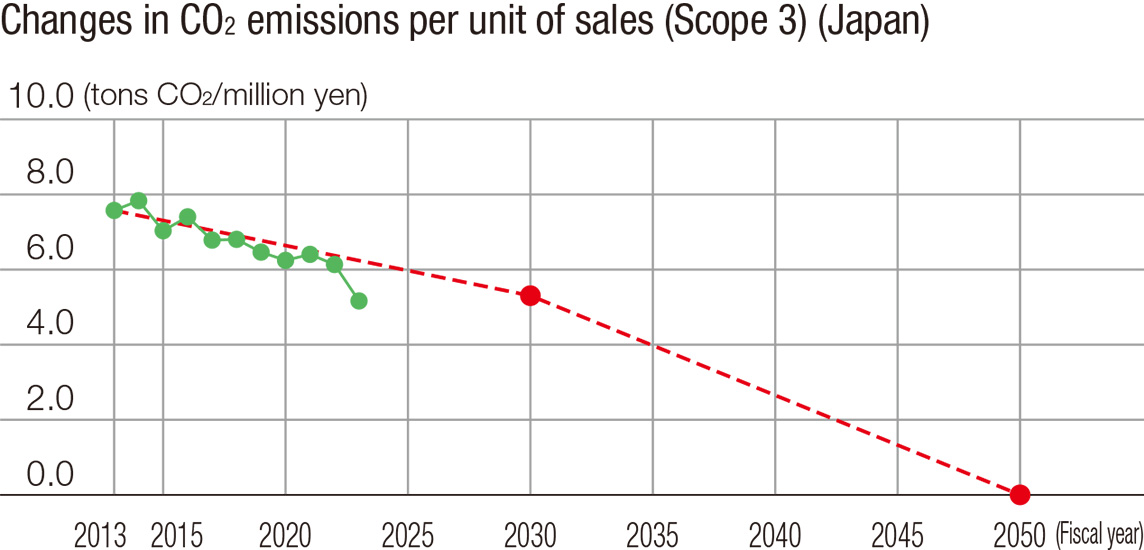
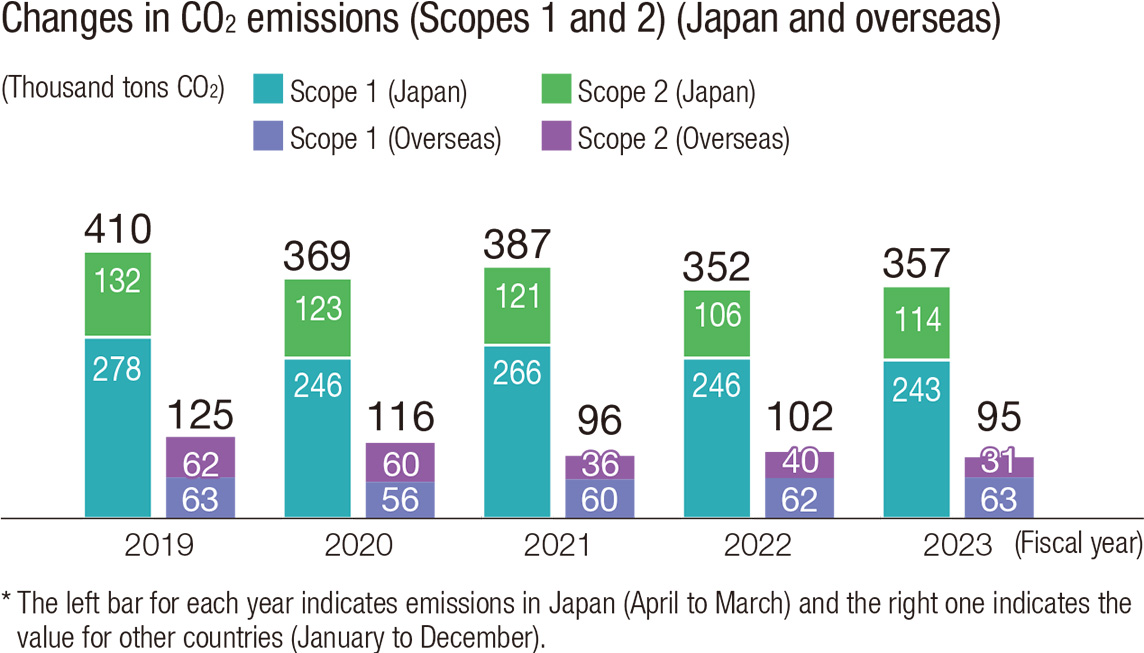
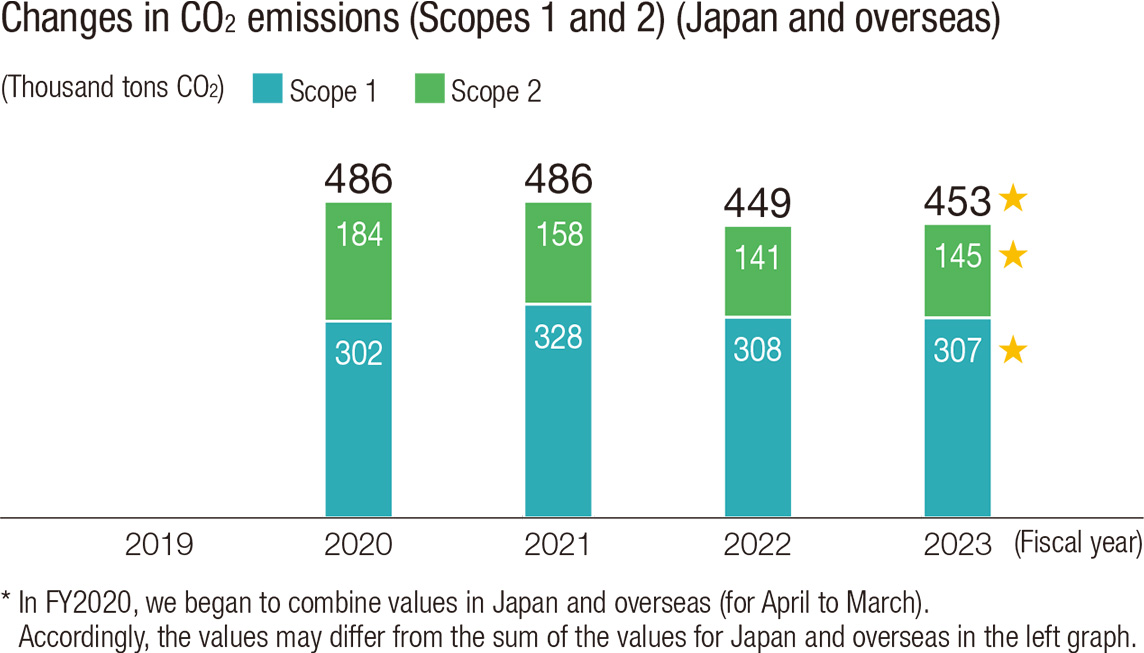
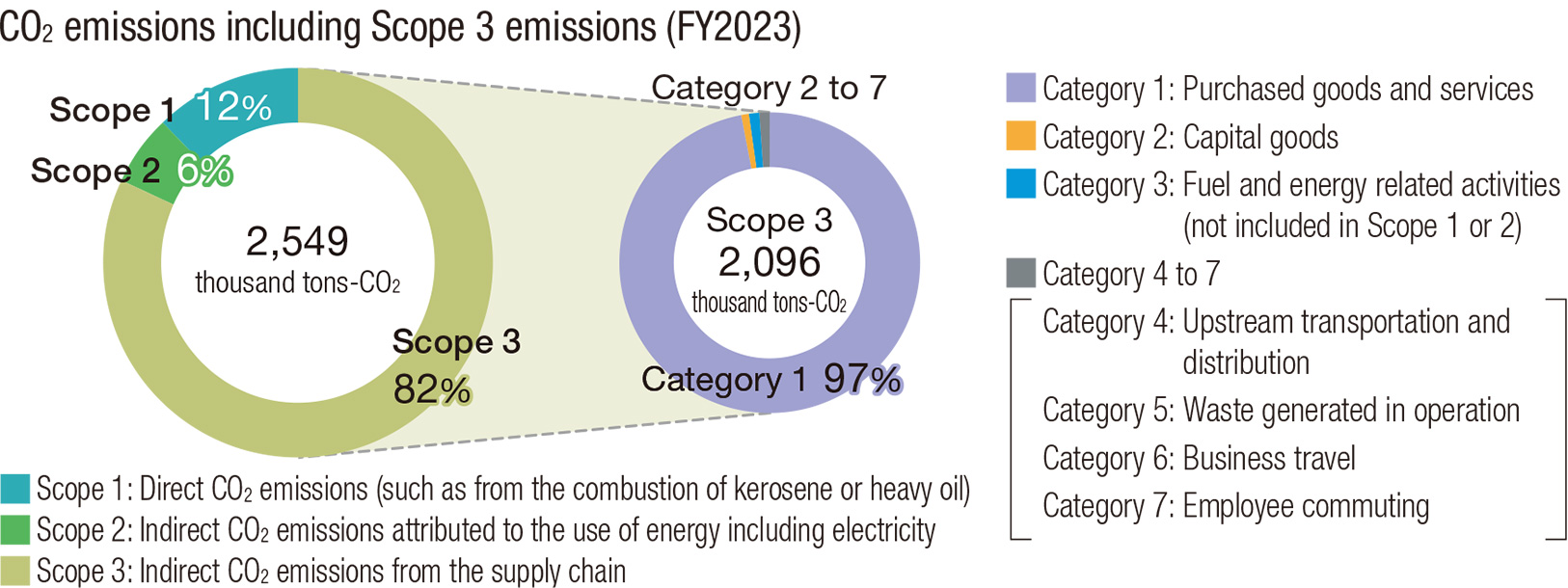
[Basis for Calculations]
* The method of calculating Scope 2 emissions has been changed from a location-based method to a market-based method. We revised the emission factors that we apply and corrected the figures for past fiscal years to reflect this change.
* Boundary: 32 manufacturing subsidiaries of the consolidated subsidiaries in Japan/12 manufacturing subsidiaries of the overseas consolidated subsidiaries
* Greenhouse gas emissions (Scopes 1 and 2) are calculated in accordance with the Act on Rationalization of Energy Use and Shift to Non-fossil Energy and the Act on Promotion of Global Warming Countermeasures, and the following CO2 emission factors are used./ Electricity in Japan: Adjusted emission factor for each electric power supplier announced by the Ministry of the Environment and the Ministry of Economy, Trade and Industry/Electricity overseas: The CO2 emission factor announced by each government (since FY2023)/Fuel-city gas: Basic emission factor for each gas business operator announced by the Ministry of the Environment and the Ministry of Economy, Trade and Industry; Fuel-others: The CO2 emission factor per unit for each fuel set by a ministerial ordinance from the Ministry of the Environment
* Actual values only relate to energy-derived CO2 emissions.
Risk Management
At the NLM Group, we regard the impact of climate change to be one of the most important sets of managerial risks. To manage these risks, we conduct scenario analyses regarding future risks and opportunities. This fiscal year, we conducted a scenario analysis for the period until 2050 in addition to the analysis for the period until 2030, which was done in the existing initiative. While the scope of the scenario analyses includes the major segments of the Group, we have been expanding this scope gradually every year to analyze the impact on the entire Group. Going forward, we will enhance the information we disclose after improving the accuracy of our quantitative analyses of the risk items that are deemed to be very important. At the same time, we will push forward with initiatives to achieve our targets.
We will report details of the analyses to the Group Environmental Committee and the Group CSR Committee and formulate risk management plans by working together with the Green Growth Strategy Office. At the same time, we will regularly report to the Board of Directors, thus strengthening the measures for addressing climate change risks.
Strategy
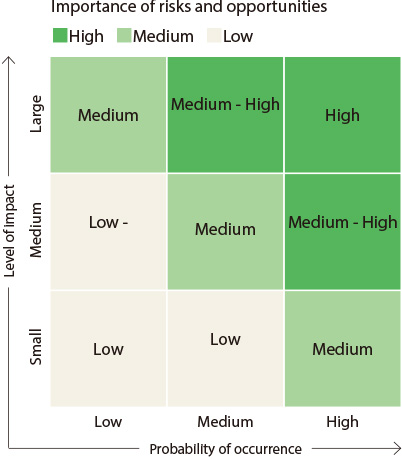
To disclose information in accordance with the TCFD recommendations, the NLM Group conducts analyses based on two scenarios to clarify the difference in the impact between the scenarios. One is the 4.0°C scenario which assumes that climate change will not be addressed. The other is the 1.5°C scenario, which assumes that the strongest regulations will be imposed. The target years we have set are FY2030, a mediumterm future for which we can be confident that the analysis results are accurate to a certain degree, and FY2050, a longterm future when the impact of climate change is expected to be more remarkable.
This fiscal year, we newly included Nikkeikin Aluminum for Mobility Company, Ltd., which was established last fiscal year, and other companies in the scope of the evaluation of the impact of risks and opportunities. However, all segments have yet to be included in the calculation because we work in a wide range of business fields.
In the actual analyses, we projected what the world will be like in FY2030 and FY2050 based on reference materials from external sources and listed risks and opportunities that may occur there. We then measured the monetary impact of each item and evaluated them on a three-point scale. At the same time, we mapped and evaluated the level of importance of each item in each predicted scenario from two perspectives, the probability of occurrence and the level of impact if the event occurs. Based on these analysis results, we will consider specific measures, including the promotion of carbon neutrality.
| Category | Description of the risk/opportunity in the scenario | Financial impact* | Degree of importance (probability of occurrence x impact) |
|||||
|---|---|---|---|---|---|---|---|---|
| FY2030 | FY2050 | |||||||
| 4.0℃ | 1.5℃ | 4.0℃ | 1.5℃ | |||||
| Risks | Transition | Policy and regulatory risks |
Increase in the cost of raw materials and production resulting from the introduction of carbon pricing (procurement) | High | Medium | Large | Large | Large |
| Increase in the cost of raw materials and production resulting from the introduction of carbon pricing (production) | Medium-High | Small | Medium | Medium | Large | |||
| Technological risks | Decline in competitiveness resulting from delays in responses to recycling regulations and technological developments | Low-Medium | Small | Medium | Medium | Large | ||
| Increase in the cost of investment, such as investments for the development of new recycling technologies | Low | Medium | Medium | Medium | Large | |||
| Market risks | Increase in the cost of raw materials resulting from an increase in scrap prices | Low-Medium | Small | Large | Large | Large | ||
| Increase in financing costs reflecting the decarbonization policies of shareholders and financial institutions | Low | Small | Small | Small | Medium | |||
| Shrinkage of the aluminum market resulting from an increase in materials that are alternatives to aluminum | Low-Medium | Small | Small | Medium | Large | |||
| Decline in sales of materials for gasoline vehicles resulting from the popularization of EVs | Medium | Medium | Large | Large | Large | |||
| Physical | Acute | Suspension of operations due to floods and storm surges | Medium | Small | Small | Medium | Small | |
| Chronic | Decline in labor efficiency and increase in the cost of labor resulting from rising temperatures | Low-Medium | Small | Small | Medium | Small | ||
| Opportunities | Transition | Products and services | Increase in sales of our products for electrified products (the popularization of EVs in particular) | Medium-High | Medium | Large | Large | Large |
| Increase in demand for other products related to decarbonization and energy conservation | Low-Medium | Small | Small | Small | Medium | |||
| Resource efficiency | Growth in demand for aluminum as a material with high recyclability | Low-Medium | Small | Small | Medium | Large | ||
* High: 10 billion yen or more, medium: 1 billion yen or more, low: less than 1 billion yen
In the future climate change scenario, the percentage of automobiles produced and sold that are eco-friendly vehicles is forecast to increase, and demand for products including materials for batteries to be installed in eco-friendly vehicles and materials for heat dissipation for cooling is expected to grow, in addition to the need to decrease vehicle weight to increase travel distance. Further, the value of products with high recyclability is expected to increase as society moves toward the promotion of carbon neutrality. We believe that contributing to a recycling-oriented society will increase corporate value.
